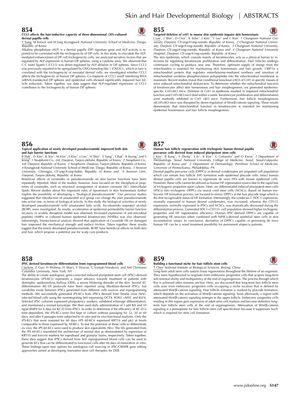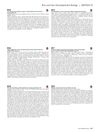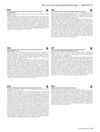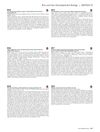Building a Functional Niche for Hair Follicle Stem Cells
April 2017
in “
Journal of Investigative Dermatology
”
CRIF1 gene skin homeostasis hair follicle morphogenesis mitochondrial dysfunction Wnt/ß-catenin signaling alkaline phosphatase C-C motif ligand 5 CCL5 hair-inducing capacity human dermal papilla cells pseudoceramide unsaturated fatty acids scalp care products induced pluripotent stem cells iPSCs keratinocytes skin equivalents trichogenic dermal papilla precursor cells alopecia hair follicle stem cells embryonic progenitor cells Wnt signaling dermal papilla cells stem cells

TLDR Deleting the CRIF1 gene in mice disrupts skin and hair formation, certain proteins affect hair growth, a new compound may improve skin and hair health, blood cell-derived stem cells can create skin-like structures, and hair follicle stem cells come from embryonic cells needing specific signals for development.
The document reports on various studies related to skin and hair biology. One study found that the deletion of the CRIF1 gene in mouse skin epidermis resulted in impaired skin homeostasis and disrupted hair follicle morphogenesis due to mitochondrial dysfunction and down-regulation of Wnt/ß-catenin signaling. Another study demonstrated that alkaline phosphatase (ALP)-regulated expression of C-C motif ligand 5 (CCL5) contributes to the hair-inducing capacity of human dermal papilla cells. A third study showed that a newly developed pseudoceramide with unsaturated fatty acids improved skin and hair barrier functions, suggesting potential use in scalp care products. Additionally, induced pluripotent stem cells (iPSCs) derived from blood cells were successfully differentiated into keratinocytes, which after 60 days of maturation could generate skin equivalents resembling normal skin architecture. Furthermore, human hair follicle regeneration was achieved using trichogenic dermal papilla precursor cells derived from iPSCs, offering a potential treatment for alopecia. Lastly, it was discovered that long-term hair follicle stem cells originate from embryonic progenitor cells in a niche with attenuated Wnt/ß-catenin signaling, which is crucial for their specification.




